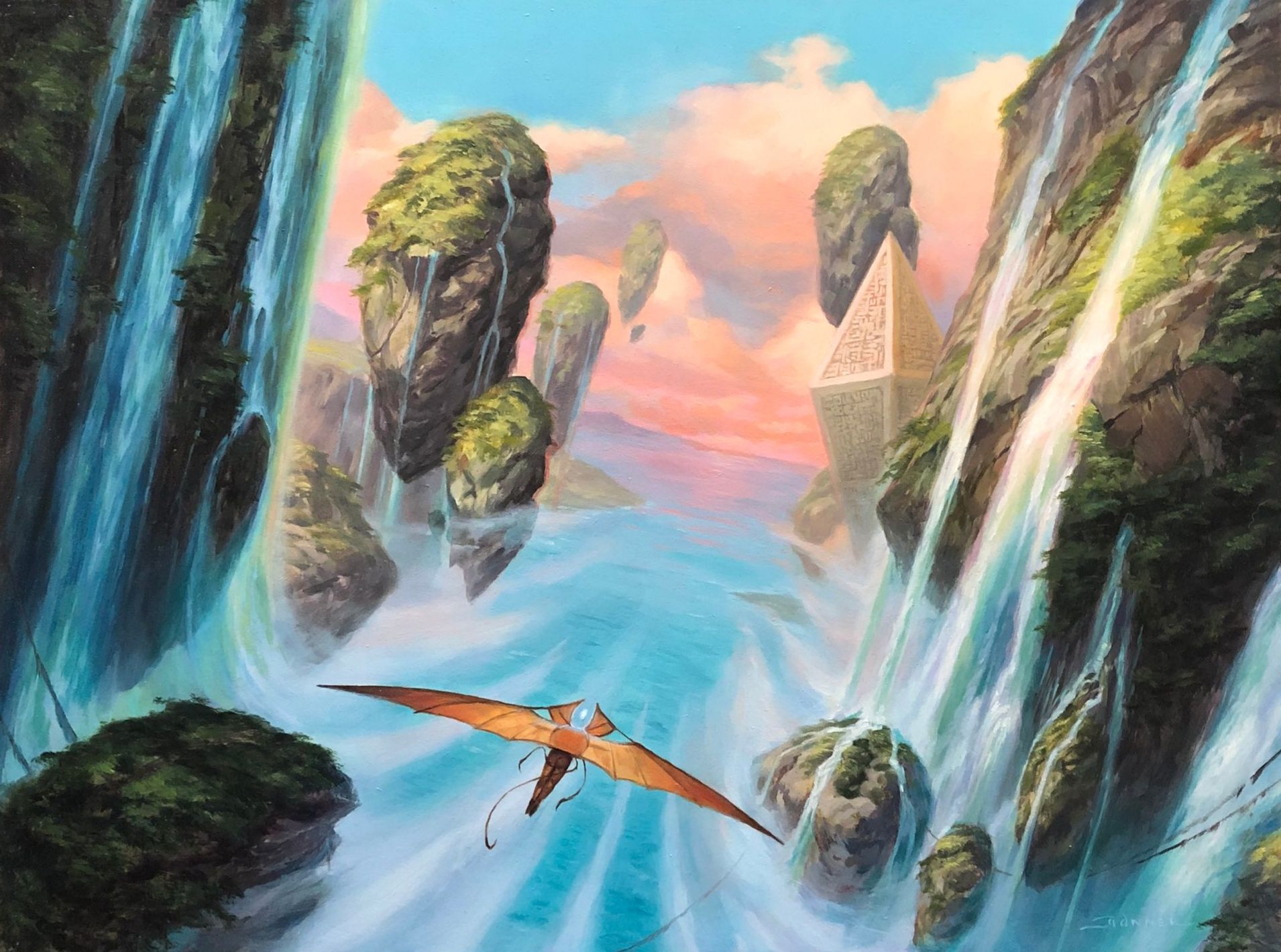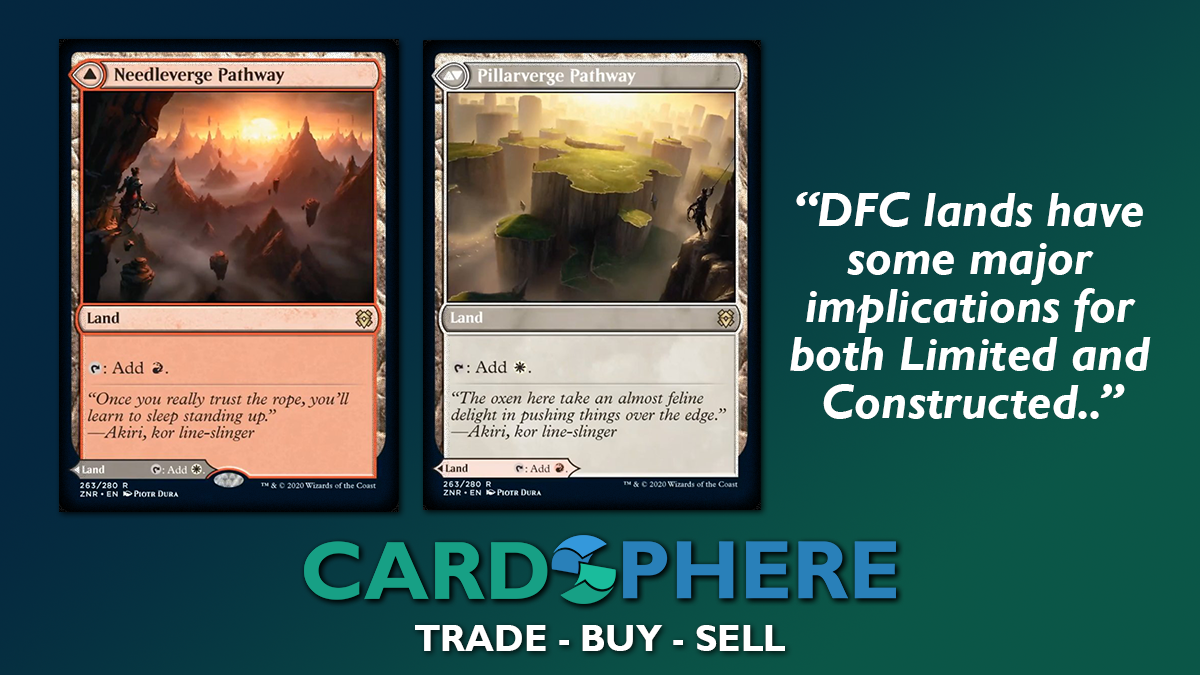Traveling to New Heights with Zendikar Rising

Spoiler season is in full swing, and today I want to take a look at what is coming with Zendikar Rising. With this being the second time we return to Zendikar, you might think we’ve seen all the tricks and secrets the plane has to offer. Don’t worry, because Wizards of the Coast has shown that they can still take us on a wild adventure.
There’s Two Sides to Every Coin
One of the big things arriving with Zendikar Rising is the introduction of dual-faced cards (DFC) for lands. These cards all have a land on one side, and either a land or spell on the other side. Rather than have a requirement to flip the card like we saw in Ixalan or Innistrad, these are modal cards where you can choose which side of the card you want to cast. Older players will be familiar with this style of card as it was originally introduced in Invasion, but these cards aren’t relegated to being just instants and sorceries. So far we have seen a variety of these cards, with some being pure mana fixing tools and others giving you an option between a spell or a land. Wizards has said you will see one DFC land in every draft pack, so these will be much more common than the Ixalan cycle which was only seen at rare.
DFC lands have some major implications for both Limited and Constructed, and we'll take a quick look at both. Constructed decks will be looking for new mana fixing tools as Standard rotates and the Ravnica shock lands leave, so six new lands that optionally come in as two different colors will be a major boon. In particular these lands will be strong in aggressive decks, as coming into play untapped is key. Not all colors received equal fixing in this cycle, with red and white having access to one more color combo than blue, black and green. Decks that value strong one drops will want to run these, but the value comes at a cost. DFC lands do not contain a basic land type like we see with shock lands or the Ikoria tri-lands. This means they will not help support any of the castles from Eldraine to come into play untapped (or checklands in historic).

Limited players will be seeing these lands frequently, since every pack will carry one. From what we have seen so far, most of the uncommon varieties will consist of a spell on one side, and a comes-into-play-tapped land on the other side. Most of the spells are fairly average or slightly overcosted, but the value of choice can’t be ignored. Similar to the cycling lands we saw in Amonkhet, these DFC’s will help prevent mana flood by giving excess lands new life as creatures and combat tricks. It's important to account for these as you build your mana base; 17 lands is the de facto standard, but how is that impacted by cards which are lands and spells? It’s important to identify your intended goal for each of these cards. Most times I expect them to be played as a land first and as a spell only if you have an excess of lands drawn already. In these cases I would count them towards my total land. However, if I have a card where my ideal scenario is playing the spell side (such as Emeria’s Call//Emeria, Shattered Skyclave) I may actually run 18 lands (including the DFC) knowing that I only want to use the land side as a worst-case scenario.
It’s Time to Party!
Another new mechanic joining us with Zendikar Rising is called party. Similar to historic in Dominaria, party is a way to refer to a collective group of creature cards, one each with the sub-types Cleric, Rogue, Warrior, and Wizard. Having a creature of the corresponding type will give bonuses to different spells, often by reducing their mana cost or increasing their benefit. While I expect party to mostly see an impact in Limited play, it will become important as players to identify anytime a player is using a creature from one of these groups. Each creature type will have three colors it identifies with in varying degrees, while green will have a smattering of all four creature types.
It will be important to recognize these groupings when drafting party-focused decks. If I am drafting a W/B deck with a focus on party I need to recognize that Wizards will be the hardest member of the party to pick up, and value the creature type accordingly. This doesn’t mean I need to first pick any white Wizard I see, but if I have a choice between a 2/2 Rogue and a 2/2 Wizard the Wizard pick should win out.
Kick Out the Jams!
The other two mechanics we will see are returning from Zendikars past: landfall and kicker. Landfall is a great way to give value to extra lands you draw in the late game, and it will be important to remember that holding back lands often has value. Turn off that automatic play a land reflex. If your curve tops out at 6, keeping that 7th land can give you an extra boost later in the game to push through a few points of damage or trigger an ability like on Phylath, World Sculptor.
Kicker is the other returning mechanic, and gives cards an additional casting cost (usually mana) added on top of the CMC for a bonus effect. Historically kicker has been a nice way to help smooth out mana curves by reducing the cost on cards but also giving them a nice perk in case you have excess land. In Zendikar Rising I expect that we will see a bit more competition for resources as some of our lands will also be spells. You may have to make the decision between casting a DFC spell or using it as a land to support spells with kicker. I expect that you generally will get more value out of using the spell side and forgoing kicker, but it will be important to recognize key points on your mana curve to decide if you can skip playing the land. In particular the lands that enter tapped will need to be analyzed early in the game, to determine if you want to put them out early while you may not have spells to play. I’m excited to see how this push and pull impacts games in both limited and constructed.
Thanks for joining me as we take a quick look at what Zendikar Rising has shown us so far. Next week I will be taking a deep dive into some specific cards from the set to see what will be impacting Standard as we experience our next set rotation.
